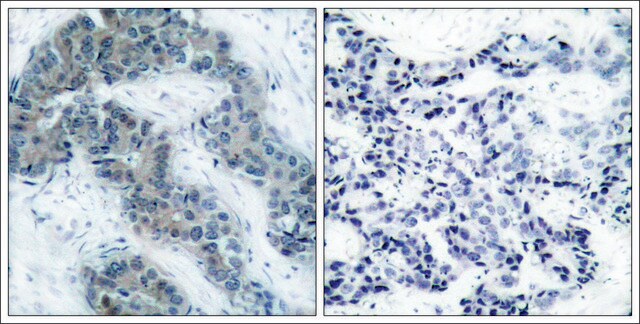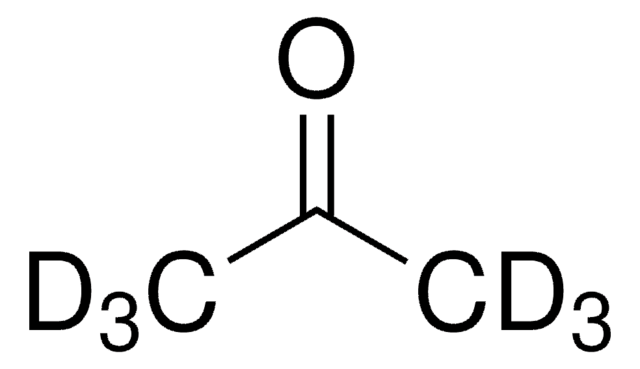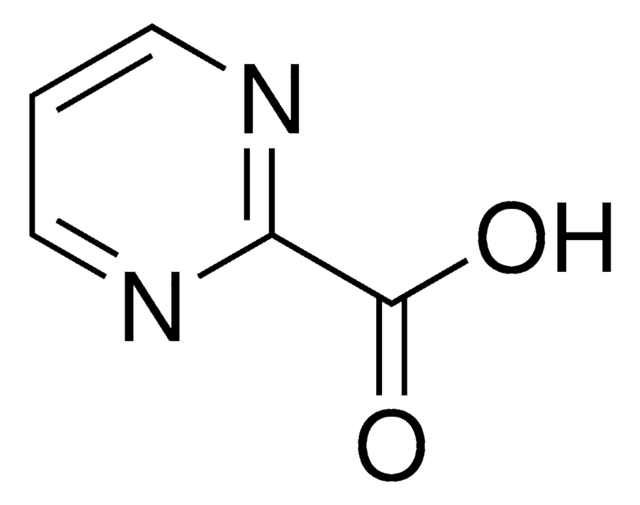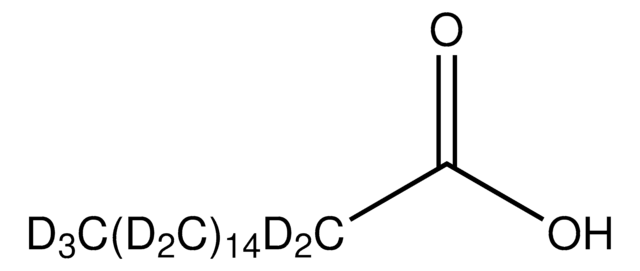39379
4-Chlor-α-cyanzimtsäure - α-Cyan-2,4-difluor-zimtsäure-Mischungmixture
matrix substance for MALDI-MS, ≥95.0% (sum of both components, HPLC)
Synonym(e):
ClCCA:DiFCCA
About This Item
Empfohlene Produkte
Qualität
matrix substance for MALDI-MS
Qualitätsniveau
Assay
≥95.0% (sum of both components, HPLC)
Funktionsklasse(n) des Analyten
drugs of abuse, ionic liquids (quantification)
chemische Klasse(n) des Analyten
chlorinated lipids, lipids, peptides, phospholipids, phosphopeptides
Methode(n)
collision-induced dissociation MS/MS (CID-MS/MS): suitable
matrix-enhanced secondary ion MS (ME-SIMS): suitable
Löslichkeit
methanol: 100 mg/10 mL, clear, colorless to light yellow
Anwendung
Ähnliches Produkt
Signalwort
Danger
Gefahreneinstufungen
Acute Tox. 3 Oral - Acute Tox. 4 Dermal - Acute Tox. 4 Inhalation - Eye Irrit. 2 - Skin Irrit. 2 - STOT SE 3
Zielorgane
Respiratory system
Lagerklassenschlüssel
6.1C - Combustible acute toxic Cat.3 / toxic compounds or compounds which causing chronic effects
WGK
WGK 3
Flammpunkt (°F)
Not applicable
Flammpunkt (°C)
Not applicable
Hier finden Sie alle aktuellen Versionen:
Analysenzertifikate (COA)
Leider sind derzeit keine COAs für dieses Produkt online verfügbar.
Wenn Sie Hilfe benötigen, wenden Sie sich bitte an Kundensupport
Besitzen Sie dieses Produkt bereits?
In der Dokumentenbibliothek finden Sie die Dokumentation zu den Produkten, die Sie kürzlich erworben haben.
Unser Team von Wissenschaftlern verfügt über Erfahrung in allen Forschungsbereichen einschließlich Life Science, Materialwissenschaften, chemischer Synthese, Chromatographie, Analytik und vielen mehr..
Setzen Sie sich mit dem technischen Dienst in Verbindung.







